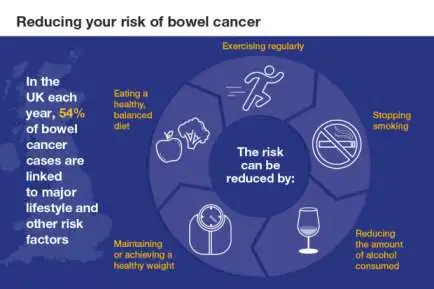
Today, the Chancellor Rishi Sunak set out the UK Government’s spending priorities for the next year.
It was an opportunity to lay the groundwork for the Government to meet its commitments to improve cancer survival and to enhance the UK’s place as a global leader in research, as we’ve written about before.
With investment for the NHS and more investment in research, the commitments outlined today are a step in the right direction. But they’re only a first step. More investment is needed in coming years for the NHS, and more details on whether investment in research includes money to protect charity funded medical research is urgently required.
Here’s what was announced today, where the Government has got it right, and what more needs to be done.
What investment did cancer services need?
We know that diagnosing cancer at the earliest stages saves lives.
Across the UK there are ambitious targets to diagnose cancer earlier, which would give people with cancer more and better treatment options, as well as improving outcomes. But this can’t be done without more investment both to expand the cancer workforce and buy more diagnostic equipment.
Importantly, even before COVID-19 there weren’t enough NHS staff to diagnose and treat cancer, and we’ve estimated the UK Government needs to invest an extra £260 million more over the next 3 to 5 years in the cancer workforce to be able to provide world-class cancer services in the future.
We also have some catching up to do with diagnostic equipment. To reach the average number of MRI and CT scanners – vital to diagnosing many cancers – among leading countries, we’d need to invest £1.5 billion. And introducing innovative models like ‘community diagnostic hubs’ that could help quickly diagnose people with symptoms of cancer would also need investment at least in the hundreds of millions, over a number of years.
What investment did the NHS get?
The good news is the health system in England will get an £3 billion on top of previous commitments. That includes £1 billion for hospitals to ramp up activity across all areas of care – which should give the NHS in England what it needs to cope through the winter.
There’s also an extra £1.5 billion to ease existing pressures on the health service, which should go some way to tackling a cancer backlog now in the millions.
On the NHS workforce and diagnostic equipment, there are also positive commitments for next year.
Vital investment in the NHS workforce has been made with an extra £260 million next year for Health Education England, the body responsible for recruiting and training healthcare staff. We strongly support this investment, which will help address the chronic staff shortages that exist across NHS and will contribute to growing the cancer workforce too.
But it’s vital that it is followed up with funding for the longer-term, as one year’s worth of investment simply isn’t enough. The NHS People Plan published in July this year talked about funding that would make sure education and training was ‘fit for the future.’
There’s also £325 million set aside for new diagnostic kit, which will help upgrade some older scanners. It’s a great start but with billions needed, the Government must commit to a multi-year plan so we can increase service capacity and support setting up new diagnostic hubs.
Devolved nations will receive an equivalent funding uplift, but importantly they don’t have to spend it on workforce and kit – so now governments across the UK must commit to using extra funding to invest in the diagnostic kit and the cancer workforce needed to meet their own ambitions to improve cancer outcomes.
Preventing cancers by funding public health services
Funding for local prevention services that help to improve the nation’s health and reduce people’s risk of cancer like stop smoking, weight management and alcohol treatment services is vital – something the pandemic has only made clearer.
For years, local government has suffered from cuts to their public health budget, and unfortunately, today’s Spending Review failed to provide any meaningful additional investment in local public health, further threatening these important services.
If the Government is serious about reducing health inequalities across the country, next year’s Spending Review must provide longer-term financial certainty, so public health services can build back better in the wake of COVID-19 and help deliver on government ambitions to improve the nation’s health.
Protecting cancer research – real commitments, but clarity still needed
Finally, research. The impact of COVID-19 on medical research charities has been devastating, with the sector expecting a £310m shortfall in their research funding this year alone. That’s why, along with the Association of Medical Research Charities, we called for a 3-year Life Sciences – Charity Partnership Fund, to ensure that ground-breaking research can continue, as we’ve outlined before.
Today, the Government committed to investing £14.6 billion in research next year, alongside some commitments to increase multi-year funding for some research. This is a significant move toward protecting the UK’s place as a global leader in research.
But, whilst some funding has been specifically marked for supporting the whole research and development ecosystem, there was no clear commitment to a Life Sciences – Charity Partnership Fund nor to any targeted support for medical research charities. We now need urgent clarity to understand whether the uplifts to research funding announced will support our vital medical research charities to recover from the impact of COVID-19.
Raising our voices
We called on the UK Government to use the Spending Review as an opportunity to double down on their manifesto commitments and give each part of the UK the funding they need to improve cancer outcomes. Adding their voices to our calls were thousands of our committed campaigners and supporters, who have been invaluable in bringing home to the Government just how important tackling cancer is.
Today, our collective voice has been heard on protecting cancer services, with steps in the right direction through investment in the NHS workforce and diagnostic kit that will help to address the growing cancer backlog. But it doesn’t end here – the money only goes as far as the next year and without the ability to plan for the future, it will be difficult to make long term progress on ambitions to improve early diagnosis and cancer survival.
And while there are positive signs on investment in research, it remains uncertain whether medical research charities like Cancer Research UK will benefit. As we work to recover from the impact of COVID-19, the generosity of our supporters will be more important than ever.
With your help, we will continue to stand shoulder to shoulder with people affected by cancer, to speak up on the changes we need to see and to hold Government to account so they take the steps forward we know are vital to saving lives. Together we will beat cancer.
Matt Sample is a policy advisor at Cancer Research UK
To find out more about how the Spending Review will impact people affected by cancer tune in to our webinar on Tuesday 1 December.
Related Post
 08
08 Jul
What Is Self-Management of Chronic Disease?
Diabetes, joint inflammation, hypertension, lung illness, corpulence and other persistent sicknesses can make life challenging to oversee for a great many more seasoned grown-ups, frequently compelling them to surrender their freedom. The Challenges of Chronic Disease More established grown-ups are lopsidedly impacted.
Read More 01
01 Jul
7 Lifestyle Tips to Reduce Your Cancer Risk
How in all actuality do individuals bring down the possibilities getting malignant growth? There's a lot of exhortation. Yet, on occasion, guidance from one review conflicts with the exhortation from another. Disease avoidance data keeps on creating. In any case,.
Read More 27
27 Jun
Effective Allergy Treatments for Kids: A Comprehensive Guide
Is your youngster experiencing a runny nose, sniffling, and bothersome eyes? Assist them with feeling improved with these regular sensitivity cures you can attempt at home. Does your kid have a runny nose, sniffling, and irritated eyes? They may be managing.
Read More 20
20 Jun
Journal Prompts for Mental Health: 7 Ideas to Explore
Journaling has a heap of psychological well-being benefits, however you don't necessarily have any idea what to expound on to get the worth out of a journaling meeting. That is where journaling prompts for treatment come in. More profound diary prompts.
Read More